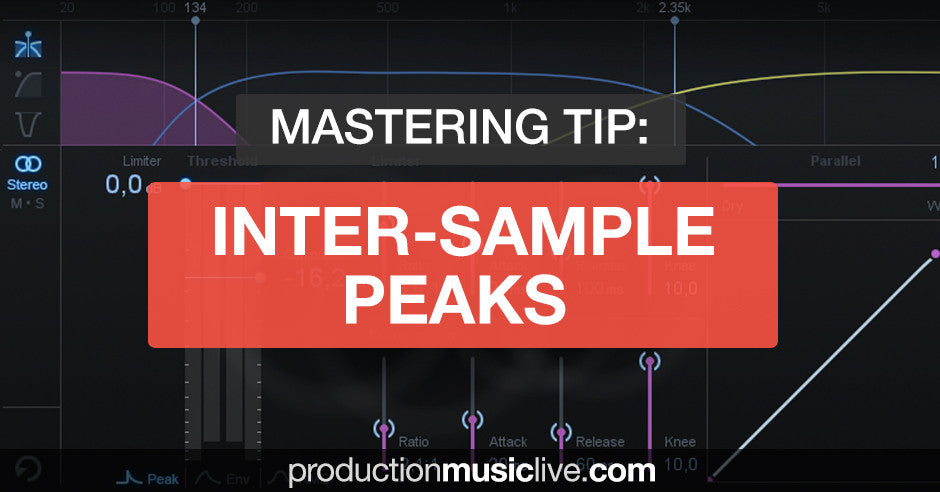If you’re like most producers, chances are that the last element of your mastering chain is a limiter with a ceiling at 0dB. Unfortunately even though in our DAW such a track isn’t clipping, it can distort after conversion to analog audio. Today I’m going to show you how to avoid this problem caused by a phenomenon called ISP (inter-sample peaks)
I used to master my tracks with the peak volume at 0dB, which was the ceiling of my limiter. „Why should I give my track more headroom if audio distorts only over 0dB?” - I thought. One time I sent my track to a friend and he put the track into an analyzer. He told me my track was clipping at times - even though it wasn’t clipping in my DAW!
What happened?
Before sending the track I converted it to mp3 - something every streaming service does (Soundcloud, YouTube, Spotify). During the conversion process, a reconstruction filter was applied to round off the stepped digital audio signal. As a result, it shrank the audio file size but caused slight changes in the levels of the audio. Here’s what digital to analog conversion looks like:

The gray columns are digital samples. When we listen to the track in our DAW, we hear digital audio - it’s got the peak at 0dB. However, during the „digital to analog” conversion process, the signal gets transformed from „stepped samples” to a smooth audio wave. The true peak of the audio waveform is lying between two measuring points (44.1kHz/s) and is not getting detected by your limiter. The audio wave curve goes above 0dB, which is distortion. It’s called an „inter-sample-peak” because the peak is created between digital samples.
How do we avoid "inter-sample-peaks"?
The easiest solution to this problem is to give your tracks more headroom by lowering the ceiling parameter on your final limiter or turning down the „Master fader” in Ableton. Most mastering engineers tend to give the track 0.3 - 1dB of headroom.
Some argue that inter-sample-peaks are barely audible and you should not worry about them. However, there’s no doubt that limiting to 0dB will cause minor distortion. If you want your track to not distort, simply give it more headroom. Especially on a vocal or piano track you don't want to have any kind of distortion.
It’s also possible to check the „converted to analog” levels right in your DAW - it’s called True Peak Metering. Here are some plugins that give you an accurate peak volume:
- dpMeter II by TBProAudio (Free)
- K-Meter by MeterPlugs ($49)
- Loudness Meter by Waves ($399)
Izotope Ozone 7 has a function called True Peak Limiting in Maximizer. It’s supposed to make the audio signal avoid inter-sample-peaks. It also has a function called „Codec Preview” which emulates digital to analog conversion in the DAW, allowing you to listen to the audio in different Bit Rates.
Good luck with your mastering. See you in the next articles!

k-pizza
I’m a music maker who likes to share his experiences with other producers. I’m regularly going to show up with music and content at PML.
Listen: https://souncloud.com/k-pizza
|
More Info:
|
Keywords: Mastering with Izotope Ozone, LUFS vs dbFS, Fab-Filter Saturn, Mastering with Fab-Filter only, Mastering with Ableton only, Fletcher-Munson Curve, Mastering Chain Blueprint
